
Chico and Punch in the wash tub, August 6, 1887. Photo by Alice Austen
George Washington. Ben Franklin. General William Howe. Cornelius “Commodore” Vanderbilt. These are just a few of the prominent men in history who visited the 17th-century farmhouse on the banks of The Narrows in Rosebank, Staten Island, where photographer Alice Austen made history in the late 19th century. Today, this old farmhouse where Alice lived with her family and her dogs Punch and Chico is a National Historic Landmark known as the Alice Austen House, aka, Clear Comfort.
Part I: Alice Austen
Alice Austen was one of America’s first female photographers. She was also a landscape designer and gardener, a master lawn tennis player, a banjo player, a sailor, a mountain climber, an avid bicyclist, the first woman on Staten Island to own a car, and an important figure in America’s gay and lesbian history.

Alice Austen sits on the porch of her family’s 17th-century Staten Island home in this photo taken sometime in the late 1800s.
Baptized Elizabeth Alice Munn on May 23, 1866, in St. John’s Episcopal Church on Staten Island, Alice chose to go by the name of Alice Austen after her mother, Alice Cornell Austen. Her father, Edward Stepford Munn, had abandoned the family before she was born, so she and her mom lived at “Clear Comfort” in the Rosebank section of Staten Island. This was the home of her maternal grandparents, John Haggerty Austen, an auctioneer, and Elizabeth Alice Townsend, a great-granddaughter of Peter Townsend of the Sterling Iron Works and Revolutionary War fame.
Also in the old farmhouse were her uncle, Peter Townsend Austen, her aunt, Mary “Minn” Austen, and her aunt’s husband, Oswald Müller, a Danish ship captain. Alice was the only child in the Austen household.
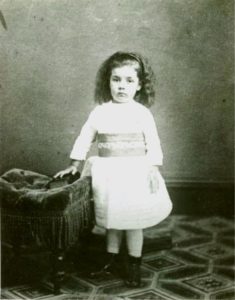
Alice Austen, about five years before she learned how to use her first camera.
When Alice was 10 years old, Uncle Oswald introduced her to a camera — possibly a dry-plate camera that he purchased during one of his seafaring voyages. When she was a bit older, Uncle Peter, a chemistry professor, showed her how to use chemicals to develop the glass plates she exposed and how to make prints from them.
Oswald and Peter installed a tiny darkroom in an upstairs storage closet, where Alice would spend hours developing her plates and making prints. The house had no running water at this time, so Alice would have to carry her plates and prints down to the pump by the well in the garden to rinse them.
Over the years, Alice took over 8,000 pictures, mostly of family and friends at first, but then later of immigrants on the streets of New York City and people she met on her numerous excursions in the United States and Europe. Alice also enjoyed self-portraits and taking pictures of Chico, her Chihuahua, and Punch, her pug (possibly one of the first pugs exported to America).
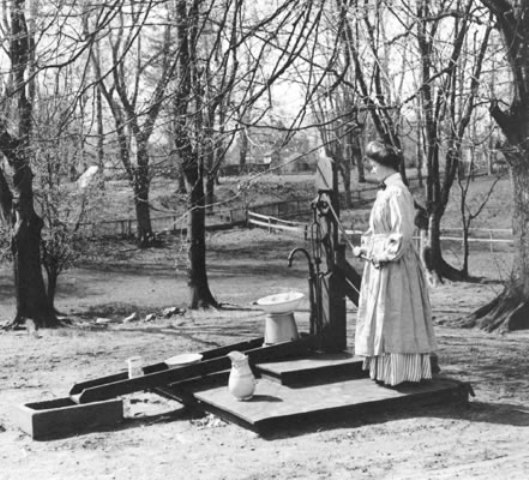
With no running water in the house, Alice Austen had to rinse her exposed plates and prints at the well in the rear garden.
Whether she was going to a winter skating party, playing lawn tennis, or riding a bicycle with her friend Violet Ward (author of the book Bicycling for Ladies), Alice never missed a photo op. She also never missed an opportunity to depict lesbian lifestyles in her work, often photographing herself and her friends smoking, dressed as men, and in loving embraces.

Alice Austen with Punch on the porch of Clear Comfort. Alice reportedly took this self-portrait just before leaving for the Chicago World’s Fair of 1893, where she photographed the Colombian Exhibition.
In 1899, while staying at a hotel in the Catskills, 33-year-old Alice met Gertrude Amelia Tate, a 28-year-old kindergarten teacher and dancing instructor from Brooklyn. Over the next 18 years, Gertrude and Alice spent a lot of time together at Clear Comfort and on European holidays.
Gertrude moved in with Alice in 1917, despite the objections of family members who were appalled by her “wrong devotion” to Alice.
By this time, Chico and Punch were long-gone; however, the two dogs did leave their mark at Clear Comfort. Reportedly, some small holes were bored into the doors to allow Chico to move about the house freely. (Alice once told a reporter that poor Punch was too big to squeeze through the holes so he would often be left outside “crying his eyes out.”)
Alice enjoyed the company of Chico and Punch for at least 15 years, and she took many photos of them with her, her family members, and even with the family’s servant, Katherine Wertz. Later on she reflected, “Such little devils– they would play such tricks on me.”
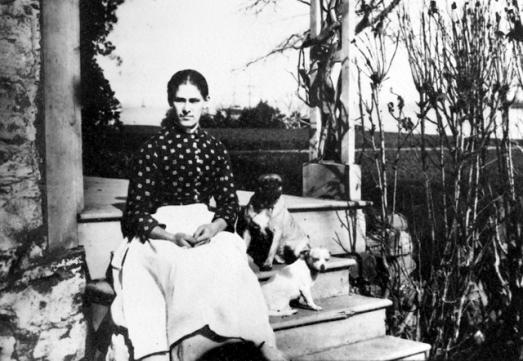
Alice Austen took this photograph of family servant Katherine (Katie) Wertz with Chico and Punch on the back porch steps of Clear Comfort.
The Great Crash of 1929
For most of her privileged life, Alice lived off the interest from the money left by her grandfather. So she was not well prepared when the stock market crashed in 1929, leaving her destitute at the age of 63.
For the next few years, Alice and Gertrude tried to get by by operating a tea room on the lawn of Clear Comfort. Alice mortgaged the house a couple of times, and she and Gertrude also rented out her Uncle Muller’s old apartment to a young doctor and his wife — Richard and Mary Cannon. Unfortunately, all their efforts weren’t enough to support the household.
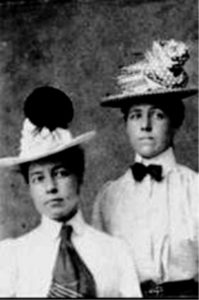
Alice Austen (left) and Gertrude Tate could have been twin sisters.
In 1944, the bank took over and sold Clear Comfort to Miss Grace Mandia of Stapleton for $7,500. Miss Mandia threatened Alice with eviction: she was to be out of the house in 90 days. Fortunately, Miss Mandia decided she did not want to live in the house, so the law was on Alice’s side: The buyer in a rent control area cannot evict a tenant unless the buyer intends to live in the building.
As it became harder and harder to get by financially, Alice began to sell furniture, silver, and other contents of the home. Just as she was about to sell the remaining contents of the home to a dealer in New Jersey for $600, she called her friend Loring McMillen from the Staten Island Historical Society.
It was Loring who discovered a stack of dusty cardboard boxes filled with glass plate negatives, and Loring who took as many of these boxes as he could — with Alice’s permission — to the basement of the court house in Richmond for safekeeping.
In 1949, Alice Austen moved into a nursing home and Gertrude went to live with her sister and family. She signed her remaining possessions over to Gertrude’s legal ownership and on June 24, 1950, took an oath declaring herself a pauper. Alice was then admitted to the Staten Island Farm Colony.
In Part II, we’ll visit the Farm Colony and explore the fascinating history of the Alice Austen House.
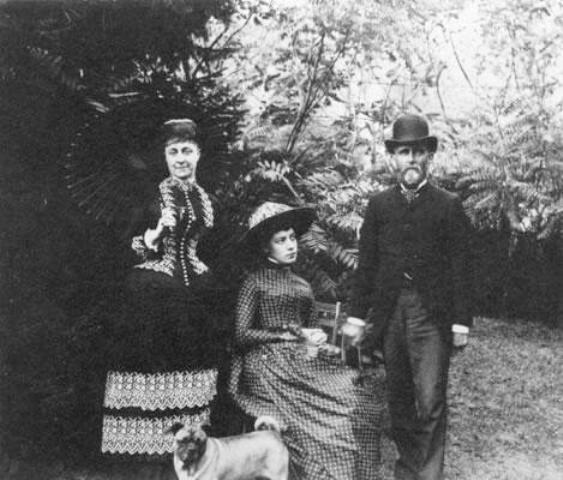
Eighteen-year-old Alice with Punch, Auntie Minn and Uncle Oswald in 1884. (Alice is holding the pneumatic cable to release the camera shutter. I don’t know how she got Punch to stay still for all these photos.)



Wow! I can’t believe I’d never heard of Alice Austen. she sits at the intersection of lesbian, dog, and art history; all interests of mine. I’m really looking forward to Part II.
I’m glad you liked this story! I had never heard of her either, until I recently saw a documentary on Staten Island on PBS. Part II is coming later today (Sunday). Enjoy!